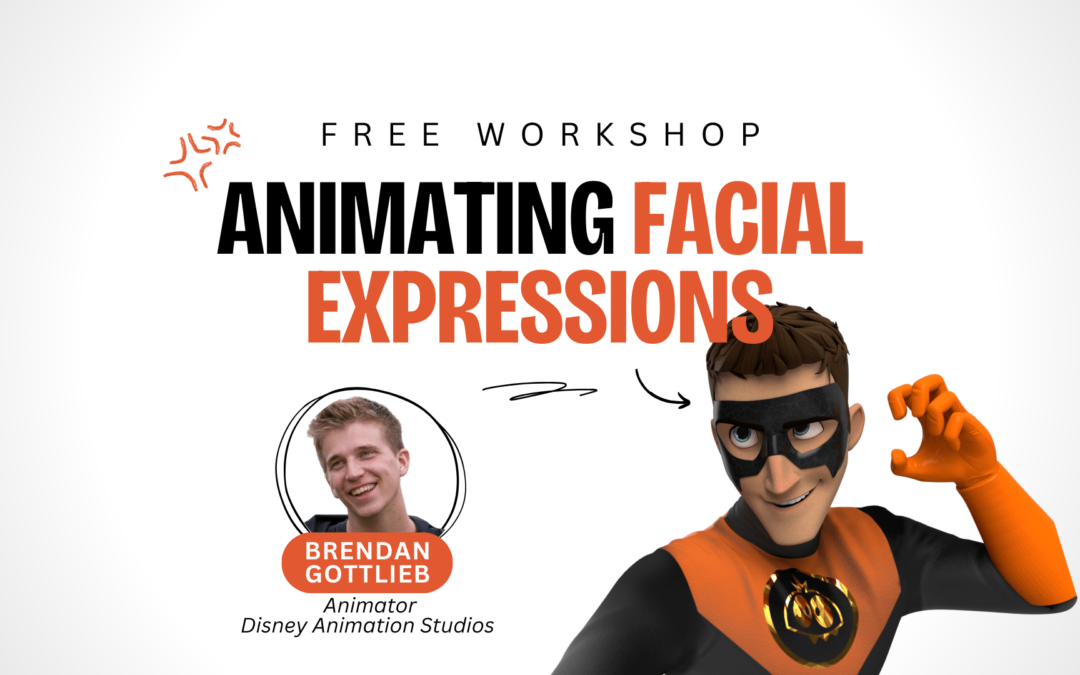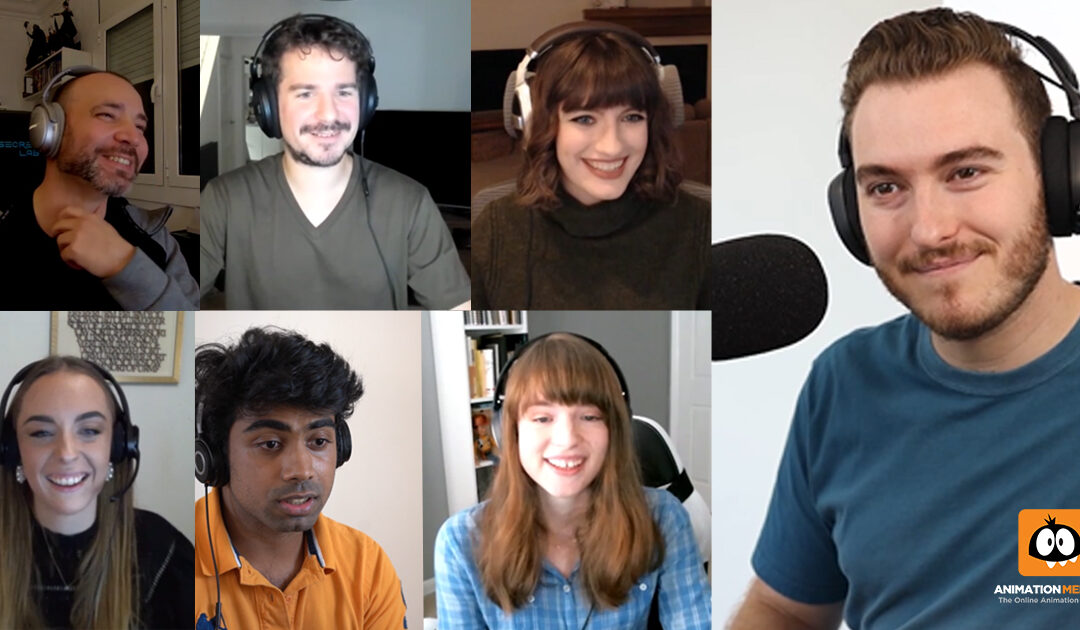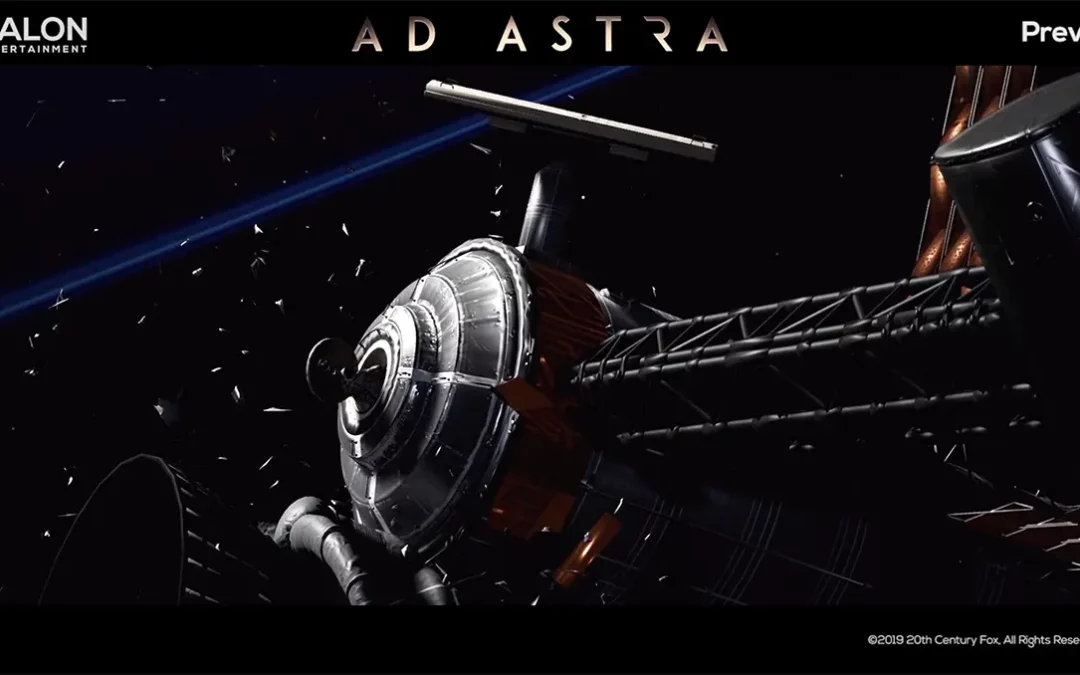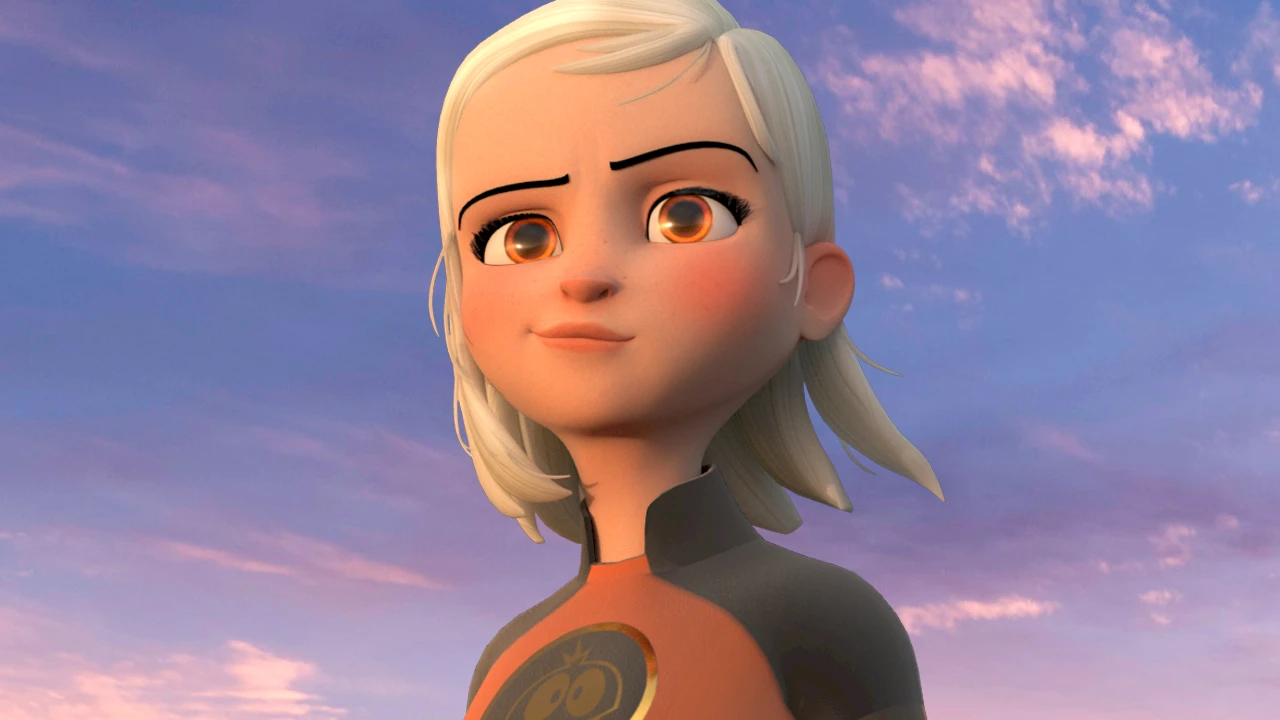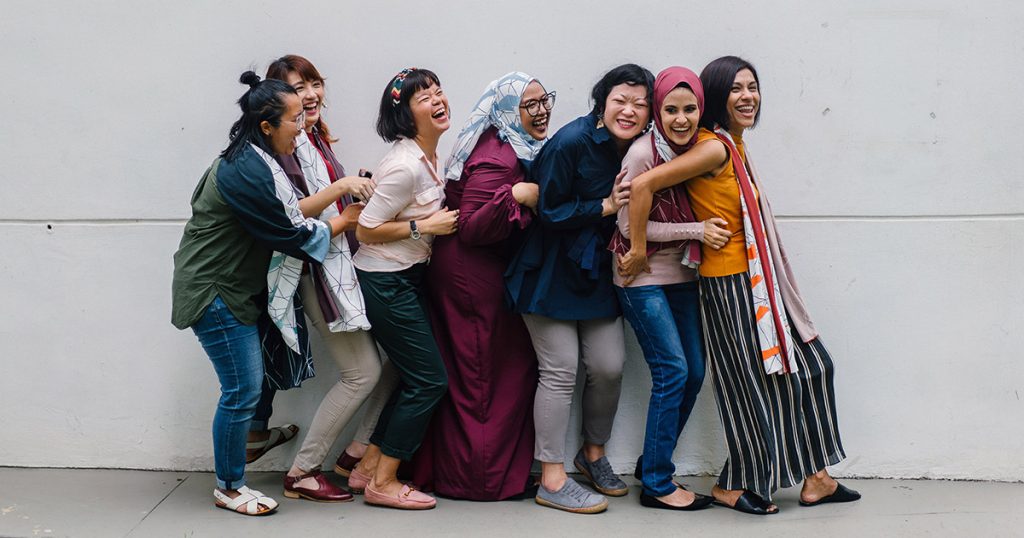
A joyful group (mentatdgt)
How to animate happiness? Well, is your character happy as a clam? Is your character on cloud nine? Over the moon? On top of the world, or in seventh heaven? From common sayings it appears that happiness is hard to pin down, so where do we start?
The “happy” facial expression is the most universal of all emotional expressions
First, the easy part: the “happy” facial expression is the most universal of all emotional expressions and is consistent across the vast majority of cultures. I’ll describe the elements of that facial expression momentarily, but before you focus on the face and a “typical” expression of happiness, consider four aspects of animating happiness: (1) intensity, (2) specificity, (3) context, and (4) mixed feelings.
Intensity
Perhaps the first place to start is to consider where on the happiness spectrum this character’s happiness fits. Contentment, satisfaction, and pleasure are all aspects or degrees of happiness, and usually range from super subtle to moderately subtle. Joy is more intense, and glee even further up on the energy/intensity scale. Simply finding an appropriate synonym for the happiness your character is feeling can help clarify things, and help you map it to a scale from subtle to extreme.
Simply finding an appropriate synonym for the happiness your character is feeling can help clarify things, and help you map it to a scale from subtle to extreme.
At the subtle end, happiness involves a modest surge of positive energy, which can be reflected in a more erect posture, and bigger, broader movements. The character puffs up a bit, the mouth and cheeks pull into a genuine smile which, while probably not an ear-to-ear grin, will push the cheeks up and cause the eyes to squint slightly.
The lower eyelids in particular are pushed up, while the upper lids may raise with excitement or lower into a squint. The latter results in that up-side-down crescent shape that is often used as a caricature of happy eyes. Note that these changes in the character’s eyes are the way to tell a fake smile from a genuine smile. A fake smile is all in the lower face – a genuine smile involves the entire face.
Note that these changes in the character’s eyes are the way to tell a fake smile from a genuine smile. A fake smile is all in the lower face – a genuine smile involves the entire face.
At the low end of the happiness spectrum, the bodily reaction will be subtle, with the face carrying most of the weight, though we’re probably not seeing any teeth yet in that smile, much less an open mouth. The change in overall behavior of someone feeling a modest level of happiness might be lost on an observer not paying attention, though it will be a clear contrast with a character who is subdued, lethargic, or depressed. As the feeling of happiness hits higher levels, it becomes fairly obvious. Routine actions are carried out with a flourish, facial expression becomes broader, and people are prone to feeling more musical (singing, humming, making dance moves).
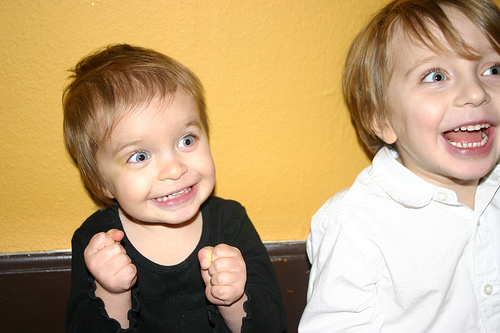
Youthful enthusiasm (Phil Scolville)
At its most intense, people tend to lose self-awareness and inhibition: hence the jumping for joy, the verbal exclamation, the fist pump, and the sine qua non of joy: a broad, open-mouth teeth-bearing grin. Clenched fists are a surprisingly common element (take a look at the winners vs. the losers at match point of a tennis match for ample demonstrations of this). People often do silly, goofy, embarrassing behaviors when they’re feeling tremendous happiness, through this loss of internal inhibition. Children in particular do some very odd and inexplicable behaviors at these times, like flapping their arms, and adults can display regressive, immature behavior, as if they’re suddenly children again.
via GIPHY
As the emotion gets to the extremes, people feel overwhelmed and we get into uncharted territory. There can be a loss of bodily control, with the individual leaning on someone or collapsing to the ground. Some people instinctively feel uncomfortable with the loss of control of euphoria, which is why we often see an involuntary, counterbalancing sadness, with crying/sobbing/blubbering and lots of tears despite the person being in an overwhelmingly positive situation. In fact, expressions of extreme happiness, despair, and pain are virtually indistinguishable!
Specificity
Remember that you are animating a specific character. While the same facial muscles are used to smile and laugh and express happiness, no two people express happiness exactly the same way, and even for a given character there is a range of possibilities. If you’re working on a production, the writers/story artists/director will have thought a lot about who the character is and can guide you. If it’s your own shot, you need to determine this yourself in great detail. There is no generic “happiness acting.”
Remember that you are animating a specific character. While the same facial muscles are used to smile and laugh and express happiness, no two people express happiness exactly the same way, and even for a given character there is a range of possibilities.
What is the character’s cultural background, age, and gender? For your character to be believable, you need to imagine that they’ve lived a life within a family, a culture, and a community that have a great deal to say about how people express themselves. Biology and brain development also change us. Life history and innate personality type intersect to make us all behave in unique ways.
Who is your character? Are they a “sore winner” who needs to express both happiness and gloating? Is happiness a rare and unusual emotion for them? Look at the photo of Farmer Hoggett (James Cromwell) from the movie Babe. This is his expression of extreme happiness! If that doesn’t make sense to you, go watch the movie and see for yourself.
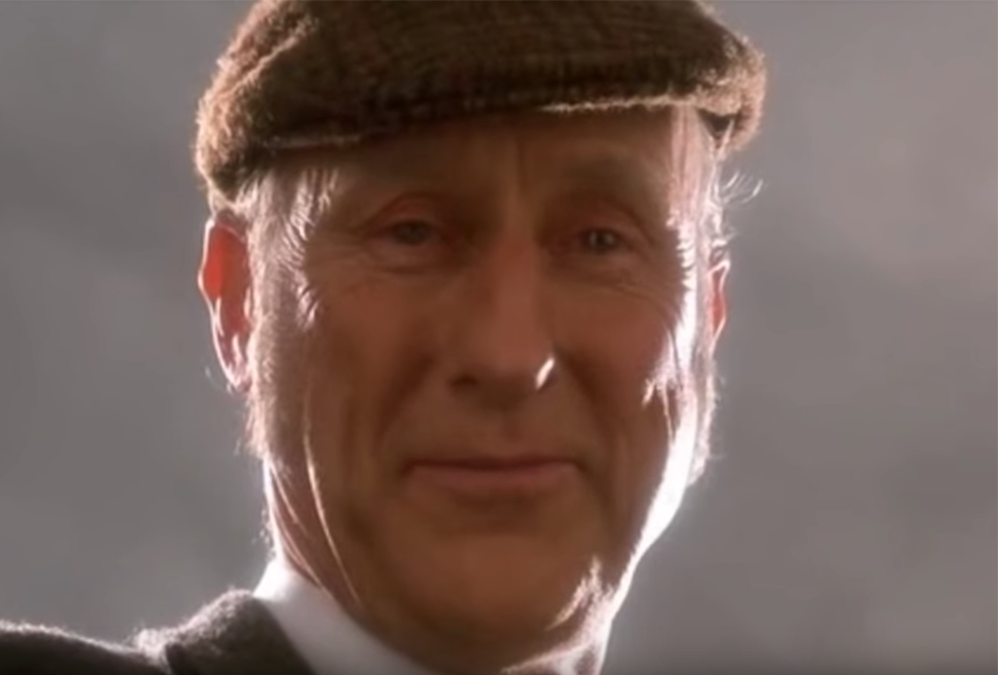
James Cromwell from Babe (Universal Pictures)
Context
Context is crucial. Your specific character is operating within an environment and situation that has everything to do with what you’ll animate. If your shot is part of a larger project, then you need to understand what lead up to the moment you’re animating, and what else is happening around your character. If it’s your own invented shot, you need to invent the context.
via GIPHY
Where are they, and what are they doing? How did the character arrive at this point in their story? What was happening just before the moment of happiness? Is it a sudden surprise (in which case, we animate some baseline state, then a crucial moment of recognition where we see the character’s realization, and then their happy reaction), or is the joy expected (opening a Christmas present when you have a pretty good idea that you’re going to get something you really want and you’re already in happy mode from the beginning)? Is the moment private or public? If it’s public, is the character among friends, who will share in the happiness, or among strangers (private happiness in a public space), or among other people who may not have positive feelings about the event (so the character has to hide or suppress their expression of happiness)?
Remember that the easiest way to convey context to your audience is with some combination of set dressing, costume, and props.
Remember that the easiest way to convey context to your audience is with some combination of set dressing, costume, and props. Try not to do the kind of acting that actors do on an improve stage, where they have to pantomime everything. This leads to overacting, and characters trying to “signify” what they’re thinking or feeling. For example, put a chef’s hat on your character, have them holding a ladle in one hand and a shaker of seasoning in the other, and suddenly it’s difficult to portray a generic version of happiness.
Live actors love working with props and costumes, even if the prop is as simple as a cigarette and the costume is basically a hat, because it gives them something to work off of. Put your character in a police officer’s uniform, or riding a bike, or behind the wheel of a car, and you both limit yourself (a good thing for creative expression!) and give yourself a great starting point for some context. And it lets you avoid just trying to illustrate a cliché of happiness, like the “jump for joy” below that only happens in staged situations.

Jumping for joy, via Pexels.com.
Mixed Feelings
Happiness (like all emotions) is rarely a “pure emotion.” There are usually other feelings and emotions mixed in, and they will reveal themselves with the happiness. A parent watching their child graduate from school may be feeling happiness, pride, relief, and sadness (that their “baby” is soon to leave the nest). That graduating student might be happy to take their diploma, but also panicked that they have no clue what they’re now going to do with their life. A coworker might be thrilled that their best friend got a coveted promotion, but may also be jealous and resentful.
via GIPHY
The flavors and varieties of mixed emotions are endless and give us many options. This is where your creativity and your life experiences come into play. Use the specific character elements and context cues you’ve invented for your character to add other flavors to the happiness you’re going to portray.
Happiness (like all emotions) is rarely a “pure emotion.”
And a final note: it’s through your character’s body language and behavior that the audience sees what the character is doing and feeling. It’s in the characters eyes that the audience sees what the character is thinking. Try not to overwhelm your audience with overacted nonsense that keeps them from seeing what’s happening in the character’s eyes. Genuine happiness radiates out from the eyes.
via GIPHY
Want to be mentored by professional animators?
Start your animation journey today by learning from animators at studios like Blue Sky, Pixar, and Sony Imageworks! Get more information about Animation Mentor’s Character Animation Program.
